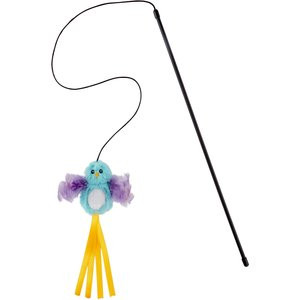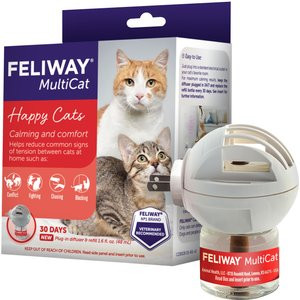Cats are known for their enigmatic nature, and one of their most common forms of communication is through vocalization, particularly crying or meowing. While it might sound like a simple “meow,” cat cries are complex and varied, each carrying different meanings. Understanding why your cat is crying is key to strengthening your bond and ensuring their well-being. Often, a cat’s cry is their primary way of getting your attention, as explained by animal behavior experts like Dr. Fox and Amy Shojai, a certified animal behavior consultant. Let’s delve into the common reasons behind these feline vocalizations.
1. The Hunger Pangs: Cries for Food
Cats are creatures of habit, and their internal clocks are finely tuned, especially when it comes to meal times. If you’re a cat owner, you’ve likely experienced the insistent meows that erupt as mealtime approaches or when their food bowl is empty. These aren’t just polite requests; they are demands! Cats quickly learn that vocalizing is an effective way to remind you of their nutritional needs.
To manage these food-related cries, establishing a consistent feeding schedule is crucial. Try to stick to the same times each day for meals. Avoid giving in to demands for extra treats outside of these times, or you might inadvertently train your cat to become a demanding “treat machine.” A predictable feeding routine helps reduce food-related anxiety and excessive meowing.
2. Doorway Dilemmas: Cries to Go In or Out
Ever noticed how cats always seem to desire the opposite side of a door? Whether they are stuck inside wanting to explore the great outdoors, or outside yearning for the comfort of indoors, cats frequently use meows to request you to act as their personal doorman, as Shojai points out.
This is a common scenario for many cat owners. Think about those times you’ve closed the bathroom door or tried to get some sleep with your bedroom door shut. The plaintive meowing from the other side is often a clear indication that your cat wants access – or egress.
If your cat’s cries for outdoor access are frequent and you have a safe environment, consider installing a pet door. This gives them the freedom to move between safe spaces or a catio without needing your constant assistance.
3. The Need for Connection: Attention-Seeking Cries
Despite their independent reputation, cats are social animals, especially with their beloved humans. They can easily become bored or lonely. When subtle nudges and paw-pats aren’t enough to get your attention, cats will often resort to crying to initiate interaction, whether it’s for petting, playtime, or simply companionship.
Responding to your cat’s calls for attention is important for your relationship. Make time for regular interaction, even if it’s just for a few minutes of petting or a quick play session. Ignoring their attempts to connect can lead to them feeling neglected and may result in them snubbing you later when you seek their affection.
 Cat playing with a feather wand toy
Cat playing with a feather wand toy
4. Expressing Displeasure: Annoyance Cries
Cats have distinct preferences, and they are not shy about vocalizing their displeasure. If you attempt to do something your cat dislikes, expect to hear about it! For instance, many cats will meow insistently to be released if they feel they are being held for too long, according to Shojai.
Paying attention to your cat’s body language is crucial in these situations. Before their meows escalate into hisses or bites, watch for warning signs like ears turning sideways or a tail thumping. These are signals to stop what you are doing and respect their boundaries.
5. Fear and Anxiety: Cries of Distress
When a cat is frightened, their initial reaction might be protest meows. However, these can quickly escalate into growls and hisses if the fear intensifies. Interestingly, a truly terrified cat might actually become silent and hide, trying to avoid drawing any further attention to themselves.
Identifying and removing the source of your cat’s fear is essential to alleviate their distress. If your cat is frequently anxious, pheromone products like the Feliway® plug-in can be helpful in creating a calming environment. Consulting with your veterinarian can also provide additional strategies to manage your cat’s anxiety.
 Feliway calming diffuser for cats
Feliway calming diffuser for cats
6. Health Concerns: Cries Signaling Illness
Cats are masters at concealing illness, a survival instinct from their wild ancestors. However, there are times when their cries can be an indication that something is wrong with their health. Some cats cry before vomiting or coughing up a hairball. Furthermore, medical conditions like hypertension, cognitive decline in older cats, and deafness can also lead to increased meowing due to discomfort, confusion, or anxiety.
Any noticeable increase in your cat’s usual vocalization should be taken seriously. It’s always best to err on the side of caution and schedule a veterinary checkup to rule out any underlying medical issues if you observe a change in their meowing habits.
7. Simply Chatty Cats: Breed-Specific Vocalization
Some cat breeds are simply more talkative than others. Breeds like Siamese, Bengal, Tonkinese, and Sphynx are known for their vocal nature. They tend to “talk” more frequently and can be quite conversational.
If you have a chatty breed, engaging in “conversations” by talking back to them can actually encourage this behavior. Whether you enjoy a talkative cat or prefer a quieter companion is a matter of personal preference!
Understanding the nuances of “Cat Cry” is a significant step in becoming a more attuned and responsive cat owner. By paying attention to the context and variations in your cat’s meows, you can better understand their needs and strengthen your bond with your feline friend.

